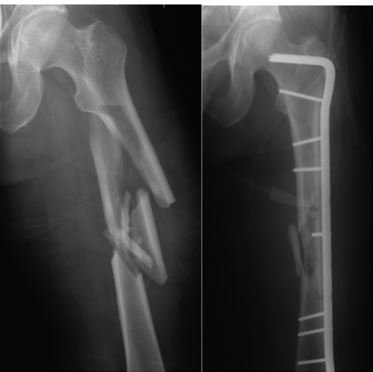

The success of open reduction and internal fixation with plates and screws makes it the most popular treatment for fractures. Traditionally, comminuted fractures were treated like a bag of bones, and treatment objectives mainly focused on preserving the remaining vitality of hard and soft tissue structures. This case report presents the successful management of comminuted mandibular fracture using titanium mesh.Ĭomminuted fractures usually present as compound or complex fractures with direct communication to the external environment.

Custom-made titanium mesh and trays are available that are adjusted intra-operatively for accurate adaptation over the surgical defect. When used judiciously they shortened the recovery period and greatly improve the functional outcomes after surgery. Titanium mesh and titanium trays serve as excellent adjuncts as they are biocompatible, allow sufficient space for bone graft placement, and require minimum screws to hold the tray/mesh in a position.
COMMINUTED FRACTURE COMMON LOCATION FULL
Scolozzi and Richter advocated that the pre-requisite for sound bone healing and low infection rate in comminuted fractures is the absolute stability of the fracture after reduction and the ability of fixation to support full functional loads of the mandible without deformation. Ellis and his colleagues treated 198 patients with comminuted mandibular fractures and proposed that in gross comminution cases like gunshot wounds and missile injuries with severe soft tissue disruption, the primary treatment objective is to maintain the spatial relationship of the fractured fragments until healing occurs.

COMMINUTED FRACTURE COMMON LOCATION SKIN
Lack of adequate skin and soft tissue secondary to injury further complicates its management.ĭirect fixation in such cases becomes challenging mainly due to the fear of devitalizing the bone and soft tissue while gaining surgical access and the lack of sufficient bone for screw fixation to act as a stable base. Treatment protocols mainly focus on aligning the fracture segments as conservatively as possible to preserve the blood supply. Unlike in other fractures, the fracture segments are multiple and arranged in a haphazard manner. Comminuted mandible fractures are relatively rare and occur as a sequela following a high velocity or high projectile impact from sports injuries, occupational injuries, assaults or missile injuries, and gunshot wounds. Mandibular fractures occur either independently or along with other facial fractures following maxillofacial trauma.


 0 kommentar(er)
0 kommentar(er)
